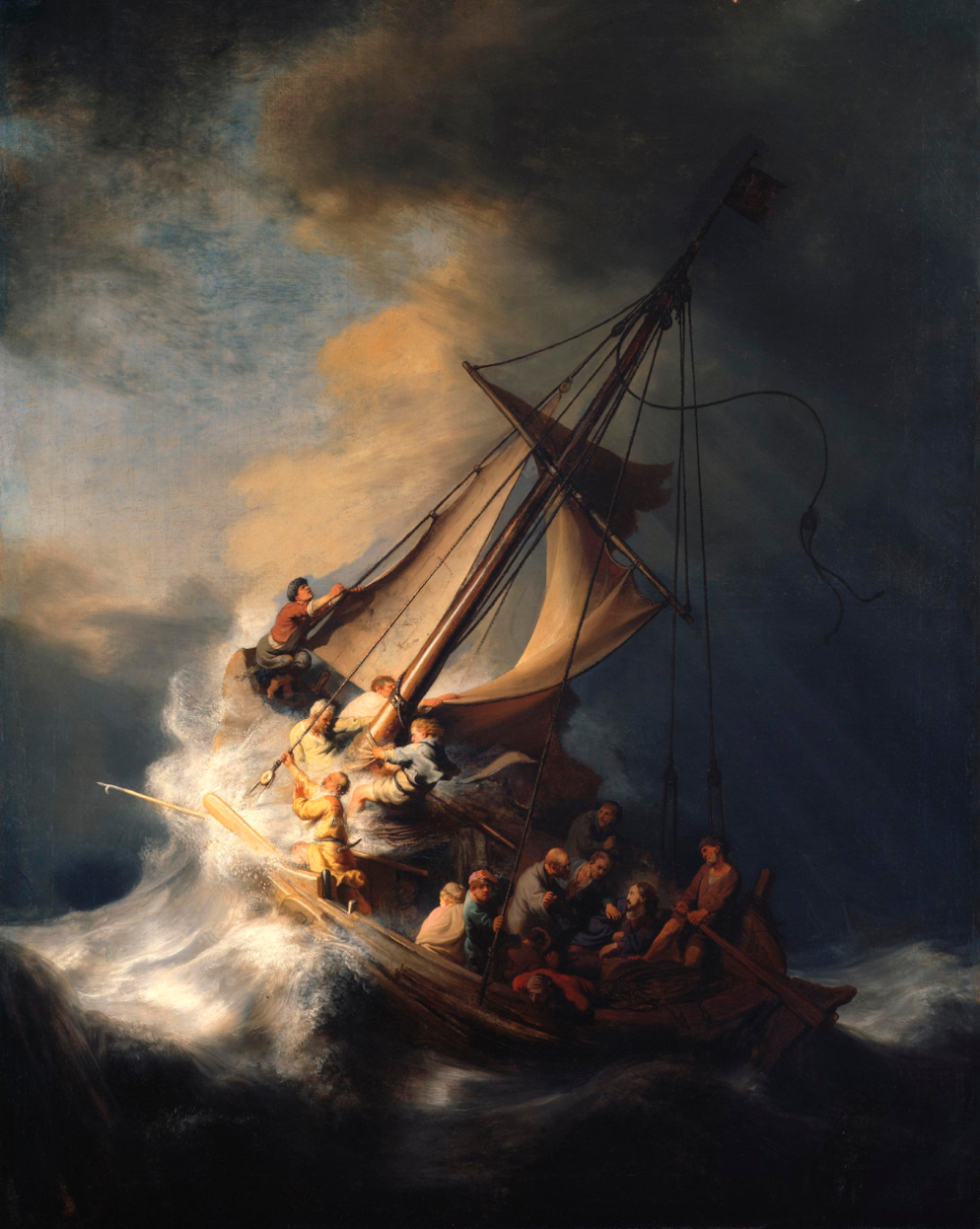Industry
Oct 13, 2022Why NFTs Will Revolutionize Traditional Art
How Artists Can Benefit from Selling Digital Art on the Blockchain
Several years before Larva Labs dropped the infamous CryptoPunks collection, a digital artist by the name of Kevin McCoy created the first NFT in history. In May 2014, McCoy minted a mesmerizing clip of an octagon, pulsating with fluorescent hues on the Namecoin blockchain. The historic gif, “Quantum” was sold for $1.47 million during the NFT boom of 2021. As an established digital artist with displays in the MoMa (Museum of Modern Art), McCoy once stated that, “The NFT phenomenon is deeply a part of the art world. It emerged from the long history of artists engaging with creative technology.”
As blockchain technology is gaining recognition for challenging the centralized systems that dictate our society, NFTs are slowly shifting the ideology behind how artwork can be distributed, collected, owned, and much more. We will be exploring the enigma surrounding NFTs, the potential they have to revolutionize the conventional art world, and how NFTs can empower artists for years to come.

First ever NFT, “Quantum” minted by Kevin McCoy.
What are NFTs?
NFTs are short for “non-fungible tokens”. The term ‘fungible’, refers to an asset or commodity that can be replaced with an identical item, and still hold the same value. For example, one U.S dollar will always equal one U.S dollar, which makes it fungible. NFTs however, hold the title of being “non-fungible”, because unlike cryptocurrencies that are also recorded on the blockchain, NFTs are not equal in exchange. Each NFT is a unique, one-of-a-kind asset stored on a blockchain. This uniquely identifiable NFT can be any number of digital assets, including a digital image, gifs, sound files, photographs, and even a tweet.
Creators can mint their digital asset on a blockchain, most commonly on the Ethereum network, and sell their NFTs at whatever price point they please. Many factors influence the value of an NFT: the artist, community, demand, rarity, authenticity, and of course, the buyer’s preference.
Beyond visual and audio files, NFTs can be used for a variety of different purposes. Since NFTs are permanently recorded on the blockchain and provide ownership of the user, they can be used in verifying event tickets, automobile ownership, real estate transactions, gaming, fashion, and more.
NFTs also utilize smart contracts. Simply put, smart contracts are programs of code that run with certain conditions that are executed when met, and are stored on the blockchain. They are used to automate the execution of an agreement so participants can be certain of the predetermined outcome, without the need for a third party intermediary. Smart contracts can be built into the NFT itself, and can be used to distribute a royalty for artists each time their NFT is bought and resold on the blockchain. This feature alone is attractive to creators, but more on that later.
Marketplace Value of NFTs
Despite the polarizing views on NFTs, they have generated a lot of wealth for creators across the globe. With strong community backing and sentiment, NFTs can typically be used as a status symbol on social platforms, such as Twitter. Even ownership history increases the value of NFTs. Just imagine buying a Bored Ape NFT that was previously owned by Serena Williams or Neymar Jr.
While NFTs vary greatly in rarity and value, the main driving factor behind them is utility. NFT utility means that beyond ownership of the NFT, the asset provides real world value. For example, an NFT collector can use his token to redeem a physical artwork or a piece of apparel based on their NFT.
In terms of market value, blockchain data company Chainalysis reported that in 2021 the overall NFT market exceeded over $40 billion. While some might argue that one can just right click an NFT and save it to their desktop, NFTs go far beyond sentiment. After an NFT is sold and verified on the blockchain network, a digital signature confirms that the NFT has now changed ownership, making it easier to authenticate and appraise the artwork.
Another valuable feature is ease of access. An NFT collector can view their art piece at any time, anywhere in the world; which is not feasible with traditional works of art. Real art works carry weight and must be staged under special conditions. Some of the most famous art pieces in history live in art galleries, and are monitored by security teams. Instead of standing for hours in line to view the Mona Lisa at the Louvre in Paris, an NFT can be enjoyed by any member of the public with access to the internet instantly.
What do NFTs mean for artists?
For artists, NFTs prove to be a great option to receive royalties every time their NFTs are bought and resold on a marketplace. NFTs give artists a platform that they would otherwise have no access to. Instead of dealing with traditional art collectors or brokers, artists can charge their own royalties with the help of smart contracts. Smart contracts are autonomous, and once the details are written and deployed on the blockchain they can not be reversed. The aspect of cryptography and NFT marketplaces may seem daunting to artists who aren't native to blockchain technology. Services such as Chain NFTs offer full-scale solutions to artists who want to launch unique NFT projects, but need help navigating blockchain technology. Chain made headlines this summer for collaborating with the iconic Tiffany & Co. brand to launch “NFTiff”. During the project, Chain delivered the resources needed to oversee NFTiff's project design, development, logistics, inventory, marketing, and minting from start to finish. Creators who use smart contract technology to receive royalties from their NFTs can benefit from Chain NFTs as well. Since smart contracts are irreversible in nature, Chain offers access to expert smart contract developers to verify these details, which allows creators to focus on their art. Since the art world is so unregulated, and millions of dollars in tax breaks flow through art transactions, the artist rarely makes a profit from his or her creation.
Aside from royalties, an NFT cannot be lost or stolen, unlike Rembrant’s infamous “The Storm on the Sea of Galilee'' which has been missing for over 30 years. NFTs live forever on the blockchain, which means artists' work can be appreciated from anywhere in the world, and not limited to a single location. NFTs enable artists to showcase their rare artworks to the mass public, which would otherwise be impossible due to the gatekeepers of the traditional art scene. Established digital artist Beeple, who sold the highest selling NFT of all time, “Everydays– The First 5000 Days”, for over $69 million (38,525 ETH), said in an interview: “..At the end of the day NFTs, it’s really just about proving ownership of something virtual or physical. And that can be applied to so many different things. We’re really just at the absolute beginning.”

“The Storm on the Sea of Galilee” by Rembrant; stolen during an art heist in 1990.
NFT artists can reach a larger audience and attract potential buyers more than any traditional art house, due to the influence of the internet. Traditional art pieces are typically sold through physical auctions, which have a far smaller reach than NFT marketplaces such as OpenSea or SuperRare.
Are NFTs really the future of art?
Simply put, everything in today’s age is consumed through screens now. Everything from phones, laptops, stadium screens, televisions, etc, are used in every waking day of modern society. While digital art and graphics may not be a new concept, owning a piece of artwork on the internet is. Although NFTs are still in their infancy and have a lot of potential, they are simply another medium of art. For decades people believed Banksy’s graffiti was simply vandalism, rather than a form of creative expression. NFTs will eventually become mainstream for future generations, and with Gen Z being the most technologically advanced generation to date, it is only a matter of time before NFTs transform how we view art.

Detail from Beeple’s work, “Everydays — The First 5000 Days.”
DISCLAIMER: NOT FINANCIAL OR INVESTMENT ADVICE
The information provided in this article does not constitute investment advice, financial advice, trading advice, or any other sort of advice and you should not treat any of the website’s content as such. Do conduct your own due diligence and consult your financial advisor before making any investment decisions.
About Chain
Chain is a blockchain infrastructure solution company that has been on a mission to enable a smarter and more connected economy since 2014. Chain offers builders in the Web3 industry services that help streamline the process of developing, and maintaining their blockchain infrastructures. Chain implements a SaaS model for its products that addresses the complexities of overall blockchain management. Chain offers a variety of products such as Ledger, Cloud, and NFTs as a service. Companies who choose to utilize Chain’s services will be able to free up resources for developers and cut costs so that clients can focus on their own products and customer experience. Learn more: https://chain.com.
Connect with Chain for the latest updates:
Twitter: twitter.com/Chain
Telegram: t.me/Chain and https://t.me/ChainAnnouncements
Medium: blog.chain.com
Instagram: instagram.com/Chain
Chain News & Updates
Latest News & Updates
Sign up for the Chain Newsletter - a weekly roundup of new platform features and the latest from the industry.
